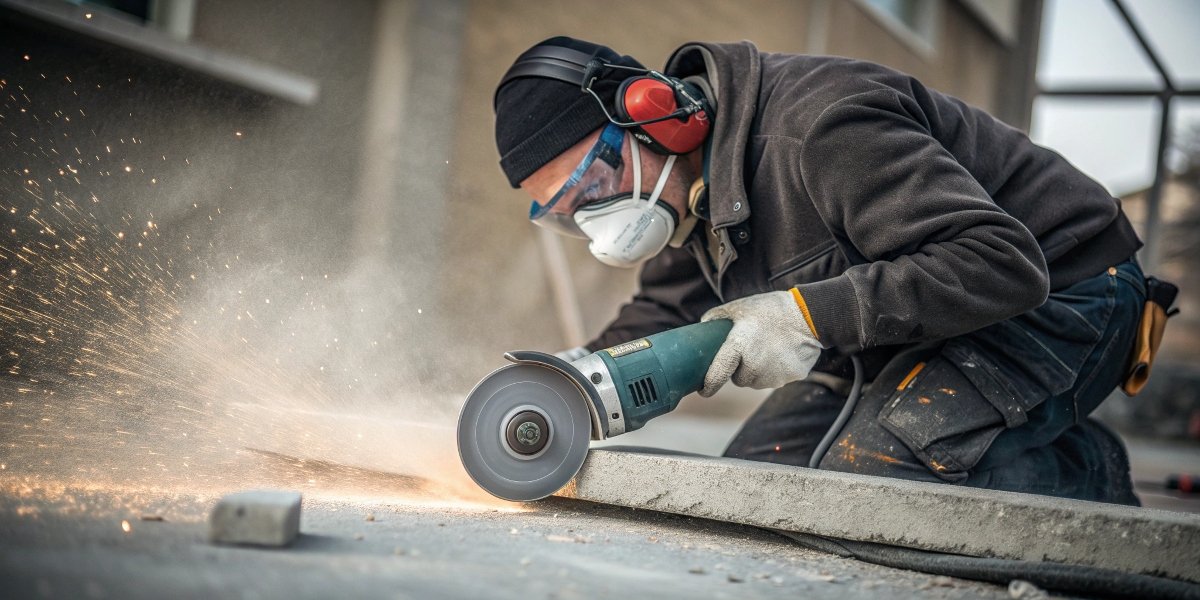
Need to cut a concrete paver but don’t have a giant saw? Using the wrong tool can be slow, wear out your discs, and create a lot of dust and danger.
Yes, you can absolutely cut concrete with an angle grinder, but only if you use the correct blade. You must use a diamond cutting disc specifically designed for masonry. Using a standard abrasive disc meant for metal is ineffective, dangerous, and will disintegrate almost instantly.
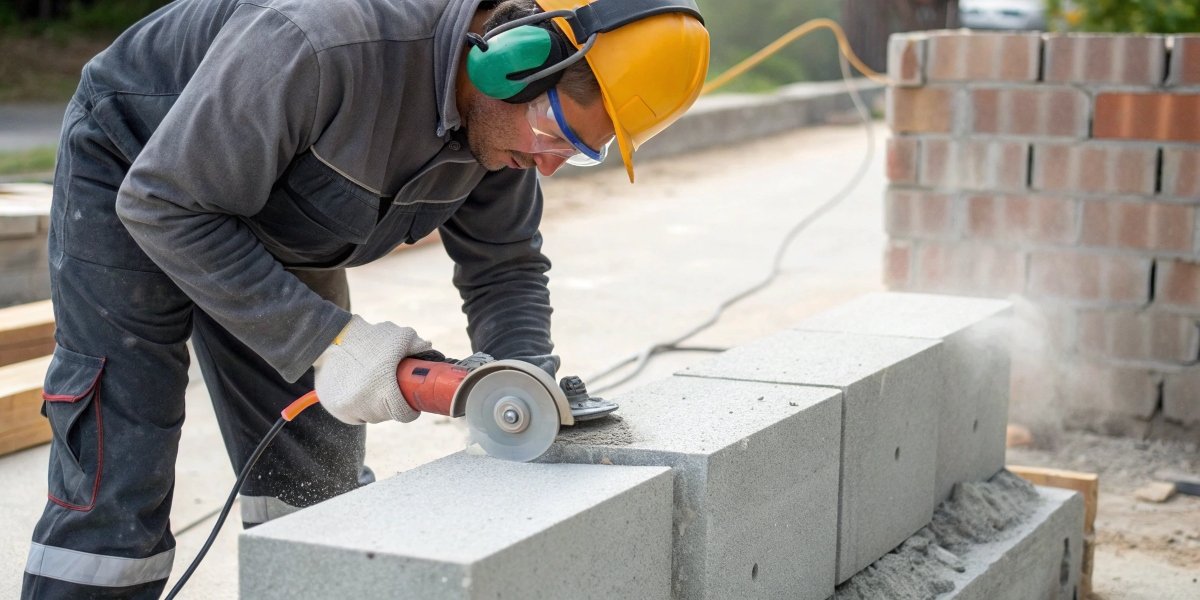
This is one of the most practical questions our clients ask. As a factory that has been producing professional-grade abrasives for almost 30 years, we’ve seen it all. Yes, an angle grinder1 is a versatile tool, and with the right accessory, it can handle concrete. We manufacture specialized diamond blades2 precisely for this purpose. But it’s not as simple as just swapping the disc. To get a clean, safe cut, you need to understand the right blade type, the correct technique, and the limitations of your tool. Let’s dig deeper into how to do this correctly.
Can you cut concrete with an angle grinder?
You’ve got the grinder and the diamond blade, but the cut is messy and slow. Just having the right parts isn’t enough; using the wrong technique wastes time and material.
To effectively cut concrete, equip your grinder with a diamond blade, and mark a clear line. Make a shallow first pass (scoring) to create a guide, then proceed with progressively deeper passes. Do not force the tool; let the blade’s speed do the work.
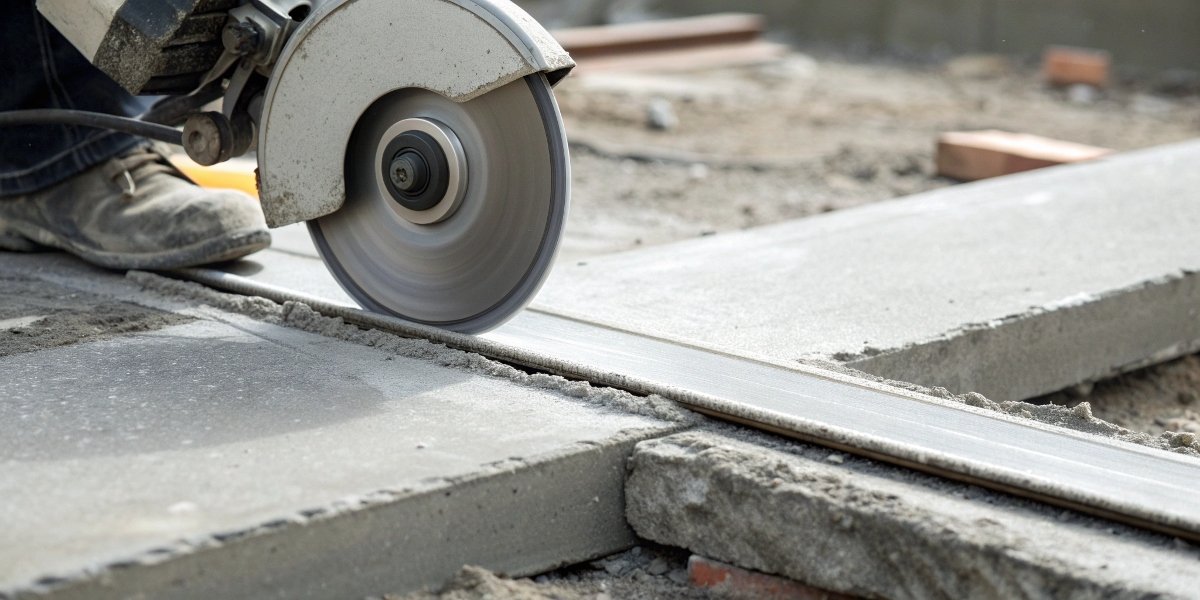
In our experience supplying construction clients, proper technique is as important as the quality of the blade. I once saw a team burning through expensive diamond blades because they were pushing down hard, trying to muscle through the cut in one pass. This overheats the blade segments, glazes them over, and stops them from cutting. We advised them to use a shallow scoring pass3 first, followed by incremental cuts. Their blade consumption dropped by 40%, and the quality of their cuts improved immediately. A little bit of technique goes a long way. The key is control, not force.
The Best Way to Cut Concrete
For a safe and effective cut, follow a structured process. This minimizes risk and ensures a clean result.
- Preparation is Key: Secure the concrete piece on a stable surface so it cannot move. Mark your cut line clearly with a pencil or chalk.
- Safety First: Put on your full Personal Protective Equipment (PPE)4. This is non-negotiable and includes a dust mask5 (N95 or better for silica dust), safety glasses6, a full face shield, and heavy-duty gloves.
- The Scoring Pass: Start the grinder and make a shallow cut, about 5-10mm deep, along your entire guideline. This creates a groove that will guide the blade during deeper cuts.
- Incremental Passes: Go back over the initial cut, letting the grinder sink a little deeper with each pass. Let the weight of the tool do most of the work. Control the grinder firmly with both hands.
| Safety Check | Reason |
|---|---|
| Wear N95/FFP3 Mask | Concrete dust contains silica, which causes incurable lung disease. |
| Use Full Face Shield | Protects from high-velocity debris and blade fragments in case of failure. |
| Secure the Workpiece | Prevents the material from shifting and pinching the blade, which causes kickback. |
| Inspect the Blade | Check for cracks, warping, or missing segments before every use. |
| Control Dust | Use a vacuum attachment or apply a small amount of water to suppress dust. |
What is the best blade for cutting concrete with an angle grinder?
Choosing a blade from a wall of options is confusing. Picking the wrong one means slow, sloppy cuts, high costs from rapid wear, and potential safety hazards on the job.
The only acceptable and effective blade for cutting concrete is a diamond blade. For general-purpose concrete cutting, a segmented rim diamond blade offers the best balance of speed and cooling. For cleaner cuts on harder materials like pavers, a turbo rim blade is superior.
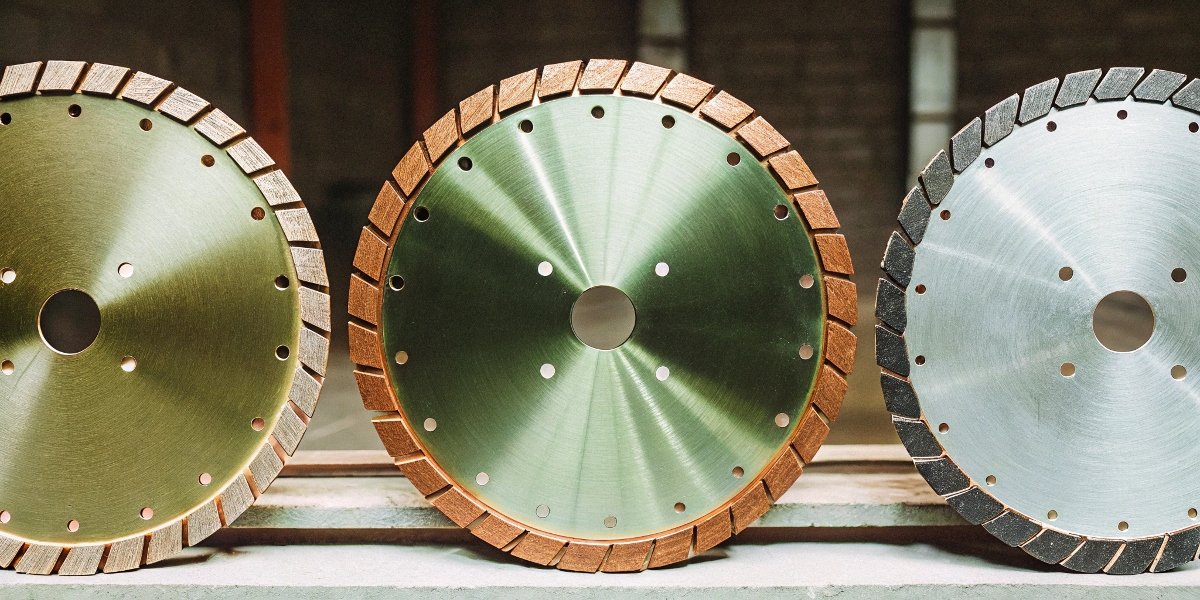
As a manufacturer, we produce a wide range of diamond blades under our RL brand and for our OEM partners. My clients’ success depends on having the right tool for the job. Standard abrasive discs for metal are made of aluminum oxide or silicon carbide, which simply gets ground away by concrete. Diamond is the hardest material known, so it can actually cut and grind the stone and sand aggregates in concrete. The choice between segmented, turbo, or continuous rim7s depends entirely on your priority: speed or finish. We always consult with our buyers to match the blade to the specific type of concrete they are cutting for optimal performance.
Diamond Blade Types Explained
The edge of the diamond blade, or "rim," comes in different styles for different jobs.
| Blade Type | Description & Best For | Common Applications |
|---|---|---|
| Segmented Rim | Has gaps (gullets) that help clear dust and cool the blade. It’s the fastest cutting but leaves a rougher edge. | General purpose concrete, block, brick, reinforced concrete. |
| Turbo Rim | Has a serrated but continuous rim. It offers a good compromise between speed and finish, with less chipping than a segmented blade. | Pavers, stone, harder concrete where a cleaner edge is needed. |
| Continuous Rim | Has a solid, smooth edge. It provides the cleanest, chipless cut but is the slowest and requires water for cooling. | Tile, porcelain, marble, glass. (Not ideal for general concrete). |
What size angle grinder for grinding concrete?
You have a big grinding job but a small grinder. Using an underpowered tool will lead to overheating and burnout, while a tool that’s too big can be dangerously hard to control.
For small cutting jobs like pavers or scoring, a 115mm (4.5”) or 125mm (5”) angle grinder works well. For grinding down small high spots, a 125mm is acceptable. For grinding larger floor areas, a more powerful 180mm (7”) or 230mm (9”) grinder is needed.
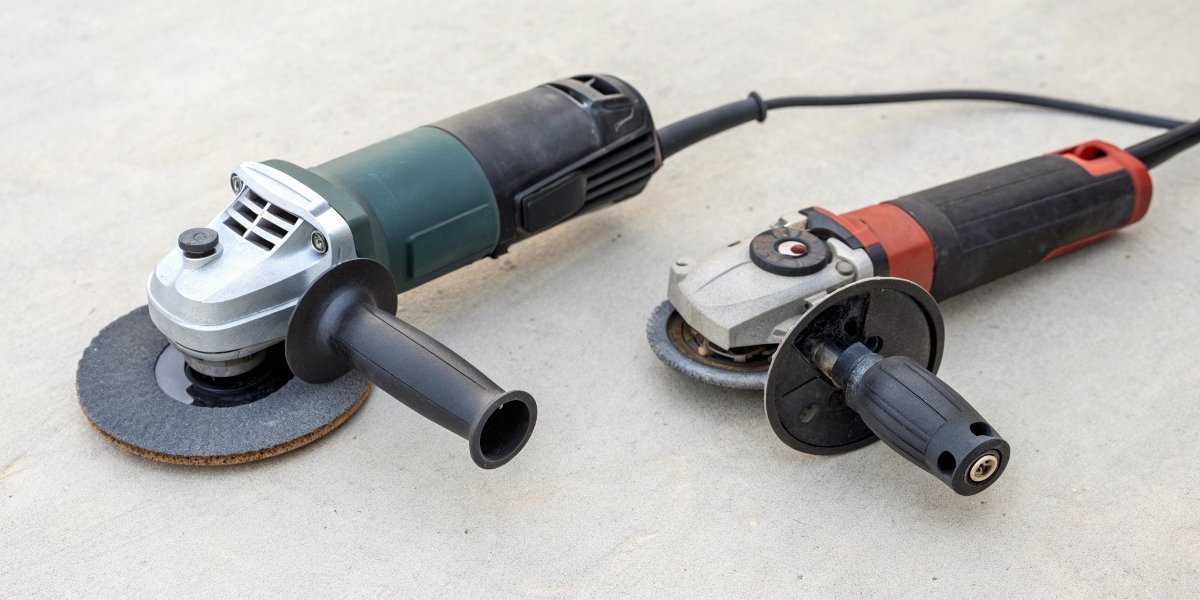
The grinder’s size determines its power and coverage. In my factory, we test our diamond cup wheels on various grinders to provide the best recommendations. A customer once tried to prep an entire garage floor for an epoxy coating using a small 115mm grinder. He called us complaining that our diamond cup wheel wore out too fast. After discussion, the issue was clear: the small grinder lacked the power and was overheating both itself and the cup wheel, destroying the diamond matrix. We advised him to rent a proper 7-inch grinder with a dust shroud. The right tool size is not just about disc diameter; it’s about having enough motor power to do the job without strain.
Matching Grinder Size to the Task
Bigger isn’t always better. The key is to match the tool’s power and size to the scale of the job.
| Grinder Size | Disc Diameter | Common Power | Best Concrete Tasks |
|---|---|---|---|
| Small | 115mm / 125mm | 700 – 1500W | Cutting single pavers, crack chasing, removing mortar, grinding very small high spots. |
| Medium | 180mm | 1800 – 2400W | Grinding small to medium concrete surfaces, leveling uneven joints, cutting small slabs. |
| Large | 230mm | 2000 – 2600W+ | Heavy-duty cutting of thick concrete. Use for grinding is rare and risky due to control issues. |
For any significant grinding (more than a few square feet), using a dust shroud that connects to a shop vacuum is essential for health and visibility.
Is an angle grinder the same as a concrete grinder?
You see an "angle grinder" and a "concrete grinder," and they both spin discs. This can lead you to believe they are interchangeable, a mistake that results in poor quality work.
No, they are fundamentally different tools. An angle grinder is a versatile handheld tool for cutting and small-area grinding. A dedicated concrete grinder is a larger, specialized floor machine designed specifically to efficiently level, smooth, and polish large concrete surfaces.
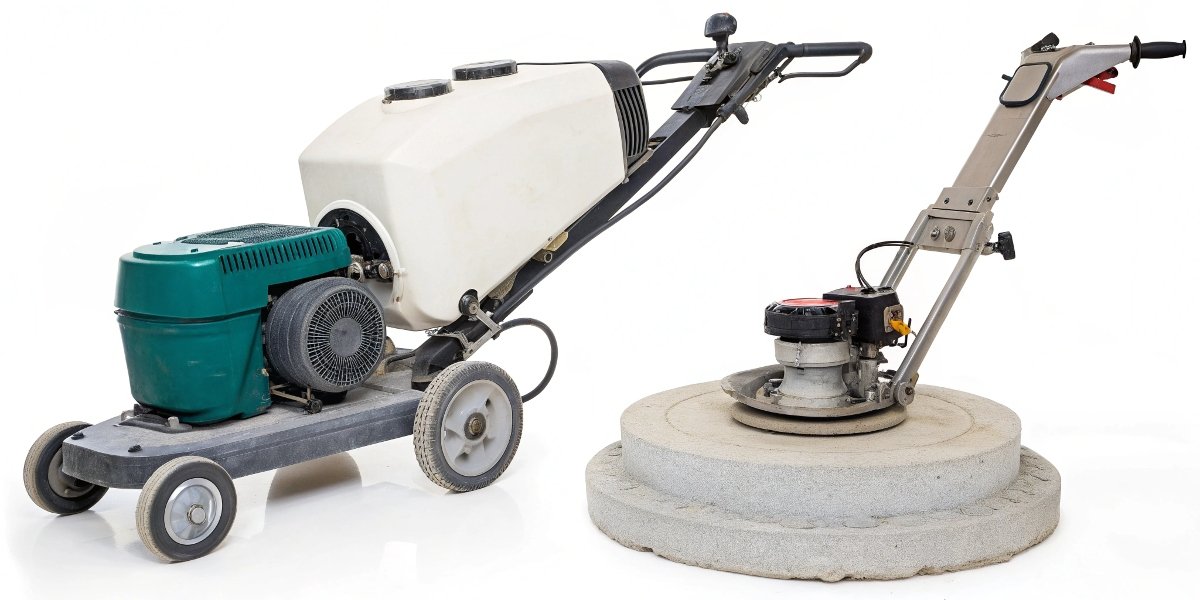
I often clarify this distinction for clients in the flooring and construction industries. While you can grind concrete with an angle grinder using a diamond cup wheel, it is only for spot work—like a single high spot or a small patch. Trying to level an entire room with one is like trying to mow a football field with scissors. A dedicated concrete floor grinder is designed for this large-scale work. It uses multiple diamond segments, is much heavier to provide consistent pressure, and has integrated dust collection. They are built for one purpose, and they do it exceptionally well. Using the right machine saves immense amounts of time and produces a far superior, professional finish.
Key Differences: Versatility vs. Specialization
| Feature | Angle Grinder | Dedicated Concrete Grinder |
|---|---|---|
| Primary Use | Versatile cutting & small-area grinding | Specialized floor prep & polishing |
| Scale of Work | Spot repairs, edges, tight areas | Large surfaces (rooms, warehouses) |
| Operation | Handheld, requires user pressure | Walk-behind, uses machine weight |
| Abrasive Tool | Single cutting disc or cup wheel | Multiple diamond-segmented plates |
| Dust Control | Optional accessory (shroud) | Often integrated into the machine |
| Result | Good for small patches | Flat, uniform finish over large areas |
Conclusion
An angle grinder is a capable tool for cutting concrete when paired with the right diamond blade and technique. For large grinding jobs, a dedicated machine is always the better choice.
-
Explore this link to understand the versatility and applications of angle grinders in various projects. ↩
-
Learn about the different types of diamond blades and their specific uses. ↩
-
Understand the technique of scoring passes and how they improve cutting accuracy. ↩
-
Explore the significance of PPE in ensuring safety during construction tasks. ↩
-
Learn about the best dust masks to protect against harmful silica dust during cutting. ↩
-
Explore the importance of safety glasses in protecting your eyes during cutting tasks. ↩
-
Learn about continuous rim blades and their use for achieving chipless cuts. ↩
Written by
leeon
You may also be interested in:

How do you cut bolts with an angle grinder?
Struggling to make a clean cut on a stubborn bolt? Using an angle grinder can feel intimidating, but it is a fast and effective method
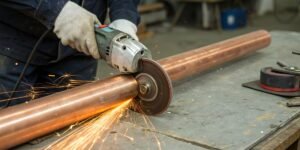
Can I use an angle grinder to cut a copper pipe?
Struggling with a quick copper pipe cut? Worried about damaging the material? An angle grinder is a fast solution, but using it wrong can be
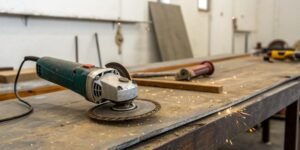
Can an angle grinder cut meat and bones?
Struggling to cut tough bones? Thinking of grabbing your angle grinder for a quick solution? This powerful tool seems like an easy answer, but it’s
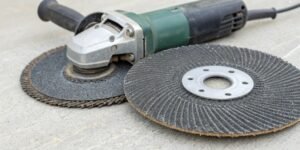
Can a metal cutting disc be used on an angle grinder?
Are you unsure about putting a metal cutting disc on your angle grinder? Using the wrong tool combination is a real safety hazard. But with
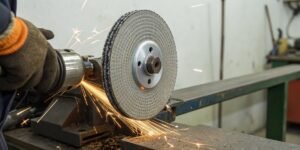
What is the best grinding wheel for cutting aluminum alloys?
Struggling to cut aluminum without your grinding wheels clogging up? This common problem wastes time, ruins your workpiece, and drives up costs, turning a simple

What does an angle grinder do that other tools can't?
Struggling with tools for multiple tasks? Carrying a heavy toolbox is inefficient. An angle grinder replaces many tools, saving you time and effort on the
